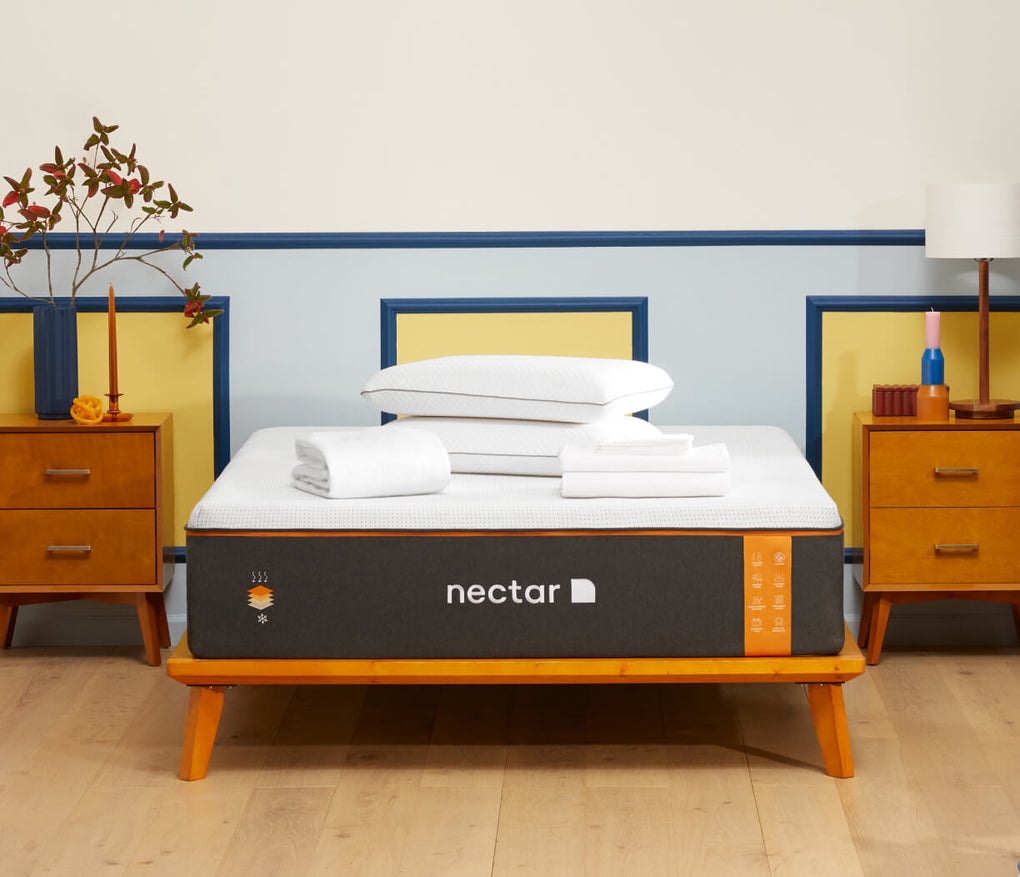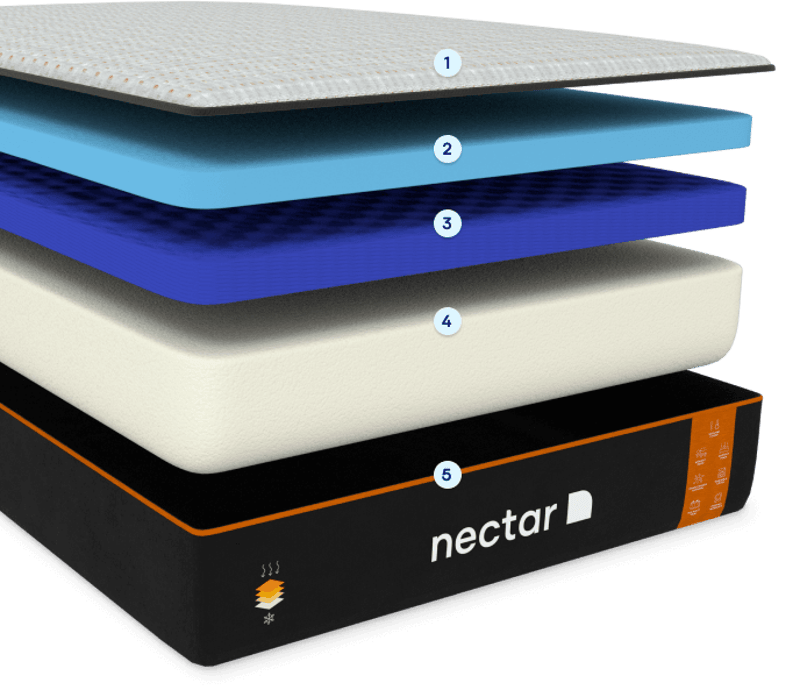Quilted Cool Cover With Copper And Sleep Fabric Tech
Conk out cool with this soft, breathable poly-blend cover featuring heat-conductive copper fibers alongside other heat wicking, cooling technology for a cool-to-the-touch sensation.
Nectar Smart Layer With ActiveCool HD
Phase-changing material dynamically adapts to your sleep temp, while 4 inches of cushy, pressure-relieving gel memory foam cuddles every curve and joint. So you zonk out in a temperature-responsive oasis.
Dynamic Support Layer
Get tailored bounce-back with 1 inch of dynamically adjusting foam. This support layer gives you what your body needs to relax into a deep sleep.
Stay-Stable Base Layer
This sturdy 9-inch bottom layer of foam ensures the comfort and support layers above it perform at their tip-top best.
Shift-Resistant Lower Cover
No slip-and-slide here. Your mattress stays together, no matter how much you jump on it.







by Brian
Outstanding mattress!!!!!!!
We thought we had a great mattress but still had back pain in the morning. Purchased your mattress and no more pain and much much better sleep!!!!!!
Would highly recommend to anyone that is suffering from back pain and poor sleep
by Richard
We are having some great sleep 😴
by Harris
I have been sleeping pretty well since i’ve gotten this mattress
by Mick
Been using the mattress for almost a month now. It’s great. Not too soft, not too firm. Great value.
by Blake
Love this mattress. Sleeping so good on it!
by John
I need another nap… Love the mattress!
by Mary
Enjoying my new mattress and accessories!
by Janice
It’s the perfect combination of comfy yet supportive. It’s a dreamy feeling when I lay down on it!
by Melissa
We recently replaced our latex mattress. We trued out several mattresses and ended up choosing Nectar for the comfort and also for the generous trial/return policy and warranty. It’s been several weeks and we absolutely love our Nectar mattress!
by Daniel
After having a major neck surgery I was looking for something more comfortable to sleep on. This definitely has met the task. I’m sleeping better and waking up with less pain.